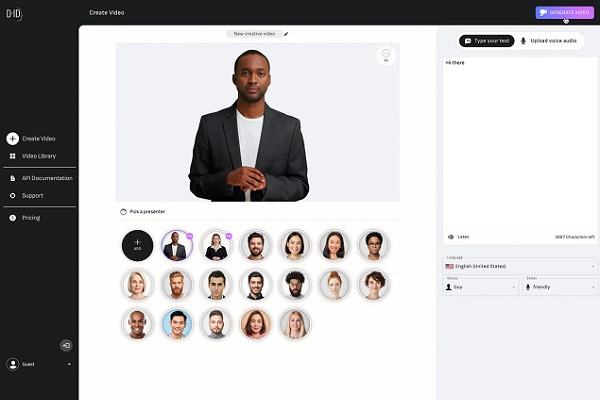D-ID made a nice PR splash last year with its ability to animate photographs using AI. The Deep Nostalgia feature offered by MyHeritage has been used on over 100 million photographs since launching in 2021.
The strength of that interest led to a $25 million funding round earlier this year. Now we know for sure what some of that funding is for. Yesterday, D-ID announced a new synthetic video production platform. You can create the avatar for your video from an image just like you do with Deep Nostalgia.
Synthetic Video on the Rise?
There is no reliable market data yet on how many people or companies are using synthetic video production and a what rate. However, there is a lot of investment in the space behind numerous startups. Hour One, DeepBrain, Synthesia, Colossyan, Elai, and others offer video creation services that come with humanlike avatars that can speak an uploaded script. D-ID is now entering this crowded field.
Granted, D-ID does have a unique feature. You can ensure you have a custom avatar just by uploading a photo. That means you can also animate a specific person you want as your presenter without the burden of a dedicated video shoot to capture the data required to replicate a human likeness as an avatar.
The supply side of this market is very active. The open question is how the demand side of the synthetic video production market will develop. It looks promising at the moment. All of those funding rounds are based on technology plus some level of market traction.
You can imagine that nearly all training videos that today use human actors will switch over to synthetic characters. The time and cost benefits are substantial. This will likely spread into explainer video and product overview videos as well. In the past, if you changed one feature, you would need to redo your video. Now you just update the script, render the new video, and you are good to go. You might not get the same level of emotional engagement as a human presenter, but the economics are very favorable.
There is also a study that showed virtual humans used in a mixed-reality leadership training environment outperformed humans in a real-life setting.
Why Synthetic Video
So, why do we need all of those synthetic characters anyway? While the economic benefits of digital characters versus human actors are obvious, what about going without either?
Adding humans to your content has long been known as a way to boost engagement. Using virtual humans will also give you a boost. I will be looking for more and newer studies on this topic as there is not nearly enough research in place around this question. Let me know if you’d like to collaborate on this and what studies you have come across that address the question of how much virtual humans can increase content engagement, learning, and recall.






